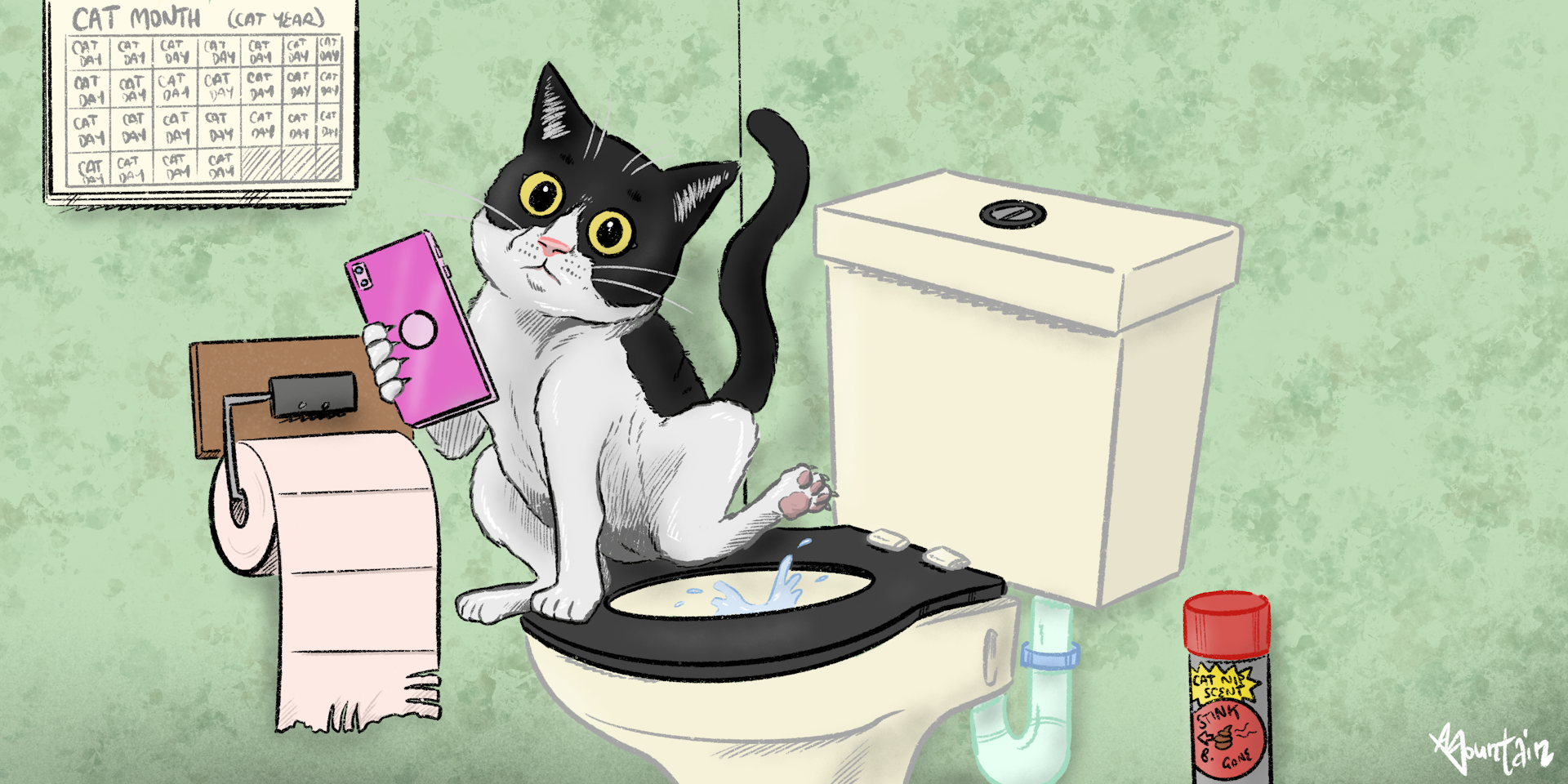The Risks of Flushing Cat Poop in Your Toilet - Preventive Steps
The Risks of Flushing Cat Poop in Your Toilet - Preventive Steps
Blog Article
What are your thoughts on How to Dispose of Cat Poop and Litter Without Plastic Bags?

Intro
As feline proprietors, it's important to be mindful of exactly how we deal with our feline pals' waste. While it might seem hassle-free to purge feline poop down the commode, this practice can have detrimental repercussions for both the atmosphere and human wellness.
Environmental Impact
Purging pet cat poop presents hazardous virus and bloodsuckers into the water supply, posturing a significant risk to marine ecosystems. These contaminants can negatively impact marine life and compromise water top quality.
Wellness Risks
In addition to ecological problems, purging pet cat waste can also position health threats to human beings. Cat feces may have Toxoplasma gondii, a bloodsucker that can create toxoplasmosis-- a possibly extreme illness, especially for expecting females and individuals with weakened immune systems.
Alternatives to Flushing
Fortunately, there are safer and much more liable methods to get rid of cat poop. Consider the complying with alternatives:
1. Scoop and Dispose in Trash
One of the most common method of dealing with pet cat poop is to scoop it into an eco-friendly bag and throw it in the garbage. Be sure to make use of a dedicated clutter inside story and deal with the waste immediately.
2. Usage Biodegradable Litter
Opt for naturally degradable pet cat litter made from materials such as corn or wheat. These trashes are environmentally friendly and can be securely gotten rid of in the garbage.
3. Hide in the Yard
If you have a lawn, think about hiding feline waste in an assigned location far from veggie gardens and water sources. Be sure to dig deep enough to stop contamination of groundwater.
4. Install a Pet Waste Disposal System
Purchase a pet dog waste disposal system specifically made for cat waste. These systems use enzymes to break down the waste, reducing odor and environmental influence.
Final thought
Responsible pet dog ownership expands beyond giving food and sanctuary-- it also involves proper waste management. By avoiding flushing pet cat poop down the bathroom and going with alternate disposal methods, we can minimize our ecological footprint and shield human wellness.
Why Can’t I Flush Cat Poop?
It Spreads a Parasite
Cats are frequently infected with a parasite called toxoplasma gondii. The parasite causes an infection called toxoplasmosis. It is usually harmless to cats. The parasite only uses cat poop as a host for its eggs. Otherwise, the cat’s immune system usually keeps the infection at low enough levels to maintain its own health. But it does not stop the develop of eggs. These eggs are tiny and surprisingly tough. They may survive for a year before they begin to grow. But that’s the problem.
Our wastewater system is not designed to deal with toxoplasmosis eggs. Instead, most eggs will flush from your toilet into sewers and wastewater management plants. After the sewage is treated for many other harmful things in it, it is typically released into local rivers, lakes, or oceans. Here, the toxoplasmosis eggs can find new hosts, including starfish, crabs, otters, and many other wildlife. For many, this is a significant risk to their health. Toxoplasmosis can also end up infecting water sources that are important for agriculture, which means our deer, pigs, and sheep can get infected too.
Is There Risk to Humans?
There can be a risk to human life from flushing cat poop down the toilet. If you do so, the parasites from your cat’s poop can end up in shellfish, game animals, or livestock. If this meat is then served raw or undercooked, the people who eat it can get sick.
In fact, according to the CDC, 40 million people in the United States are infected with toxoplasma gondii. They get it from exposure to infected seafood, or from some kind of cat poop contamination, like drinking from a stream that is contaminated or touching anything that has come into contact with cat poop. That includes just cleaning a cat litter box.
Most people who get infected with these parasites will not develop any symptoms. However, for pregnant women or for those with compromised immune systems, the parasite can cause severe health problems.
How to Handle Cat Poop
The best way to handle cat poop is actually to clean the box more often. The eggs that the parasite sheds will not become active until one to five days after the cat poops. That means that if you clean daily, you’re much less likely to come into direct contact with infectious eggs.
That said, always dispose of cat poop in the garbage and not down the toilet. Wash your hands before and after you clean the litter box, and bring the bag of poop right outside to your garbage bins.
https://trenchlesssolutionsusa.com/why-cant-i-flush-cat-poop/

Do you appreciate more info about Don’t flush cat feces down the toilet? Try leaving a remark down below. We'd be interested to see your responses about this write up. We are looking forward that you visit us again in the near future. Liked our post? Please share it. Let another person check it out. I recognize the value of reading our article about How to Dispose of Cat Poop and Litter Without Plastic Bags.
Check Us Out Report this page